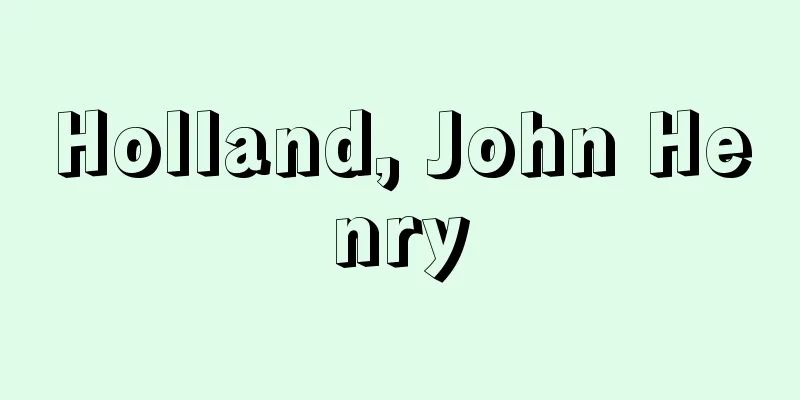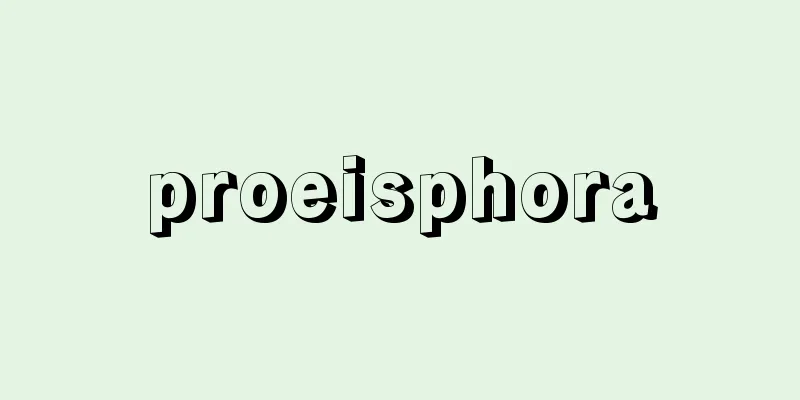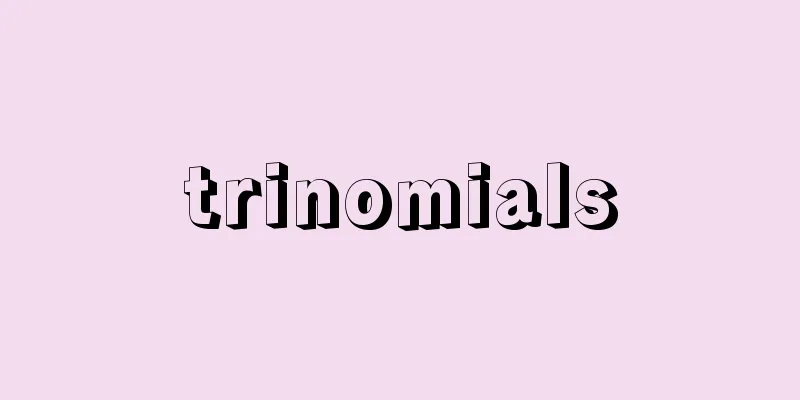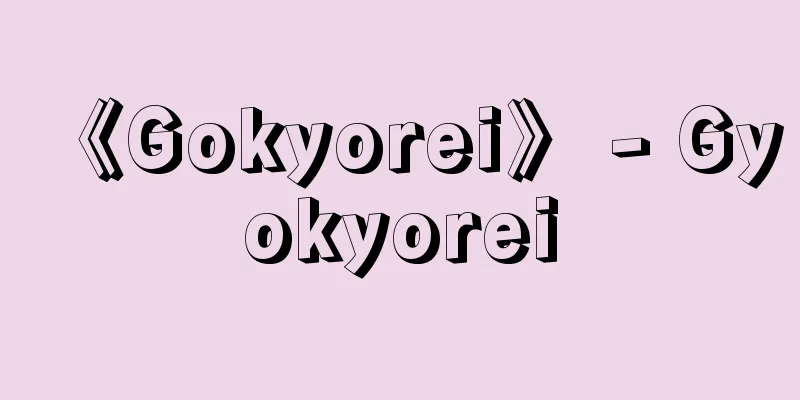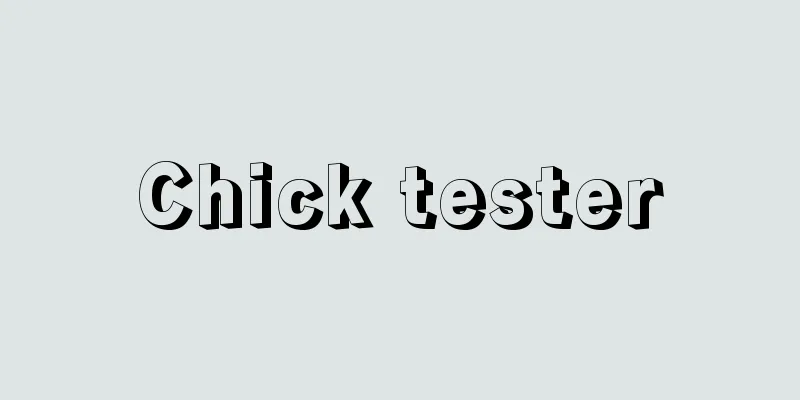Togo - Togo (English spelling)

|
A country in eastern West Africa, facing the Gulf of Guinea. Its official name is the Republic of Togo (République du Togo). It borders Benin to the east, Ghana to the west, and Burkina Faso to the north. It has an area of 56,785 square kilometers, and a population of 2,700,982 (1981 census), 5,548,702 (2006 estimate). The capital is Lomé. [Minoru Obayashi] NatureThe country is a long, narrow strip stretching 560 km from north to south, with a coastline running east to west at its southern end that is only 70 km long. The coastline is a sandbar, behind which is a marshland with developed lagoons. The largest lagoon is Lake Togo, from which the country's name is derived. The southern inland area is a plateau about 90 meters high. In the central area, the Togo Mountains are hilly and 100 to 500 meters high (the Togo Mountains are called the Atakora Mountains in the north and Benin), dividing the country diagonally from the south-southwest to the north-northeast. The Togo Mountains are highest in the westernmost area and become lower toward the east. The north is a plain sandwiched between the Togo Mountains and the mountain ranges near the border with Burkina Faso, and is the drainage basin of the Oti River, a tributary of the Volta River. On the border of the Togo Mountains, the south is tropical rainforest, and the coast is densely covered with mangroves. North of the mountains is a savanna region that is strongly influenced by the harmattan, a dry, hot north-northeasterly wind that blows from the Sahara Desert. Rainfall is highest in the Togo Mountains at about 1,500 mm per year, decreasing further south. In the coastal town of Lomé, precipitation is unusually low for the Gulf of Guinea, at 778.3 mm. The northern part of the country receives more rain than the coast, at about 1,100 mm per year. There are dry and rainy seasons, but in the south, in addition to the rainy season from May to June, there is also a small rainy season in October. The harmattan blows from December to January. [Minoru Obayashi] historyThe present Togo has never had a powerful state like the Ashanti Kingdom in the west or the Dahomey Kingdom in the east. The Portuguese arrived at the end of the 15th century and sent missionaries in the 16th century, and slave trade was also carried out early on, but the impact of the slave trade in the north was relatively small. It was not until 1800 that full-scale commercial activity began, based in Anéchou on the Gulf of Guinea. Even as the division of colonies intensified in the 19th century, Britain and France paid little attention to this area, which lacked a good port, and Germany, a latecomer imperialist country, advanced there. In 1884, Gustav Nachtigal (1834-1885), who was sent from Germany, concluded a protectorate treaty with the coastal chiefs, and in 1885, Germany's sovereignty over Togo was recognized at the Berlin Conference. In 1879, the western border with the British Gold Coast was established, and in 1897, the eastern border with the French Dahomey was established. In order to stabilize its control over the territory, Germany pacified the local people, especially the Konkomba and Kabure people in the north. Although the German period was short, underground resource development, introduction of cocoa, cotton, and teak, construction of the capital Lomé, port development, and railway construction were rapidly promoted, accompanied by the hard work of Africans. During World War I, Togo fell into the hands of British and French troops, and in 1922, the eastern part of Togo became a French mandate, while the western part became a British mandate. After World War II, in 1946, Togo became a UN trust territory. French Togo became an autonomous republic within the French Union on August 30, 1956, and gained independence as the Republic of Togo on April 27, 1960. On the other hand, British Togo became part of the Gold Coast when it gained independence as Ghana in 1957. [Minoru Obayashi] PoliticsOlympio, the representative of the Ewe unification movement that had developed since 1946, became Prime Minister of the autonomous government in April 1958, and was elected the first president in April 1961. However, as Olympio's government, which originated from the south, gradually became more authoritarian, discontent grew, especially in the north, which had suffered from regional disparities since the colonial era. In January 1963, Olympio was assassinated in a coup led by Sergeant Gnassingbé Eyadéma (1937-2005) and others. Eyadéma returned to military rule in another coup in January 1967. In November 1969, he founded a single political party, the Rally for the People of Togo (RPT), and became its chairman, achieving a transition to civilian rule. While Eyadema strengthened the centralization of power and the cult of personality, he also launched a nationalist campaign from 1974 onwards, including the nationalization of phosphate mines and the Africanization of personal and place names. For a long time, the creation of a new constitution, which Eyadema promised, did not come to fruition, while conspiracies allegedly perpetrated by the Olympio faction were repeatedly uncovered. In December 1979, a new constitution was created that confirmed Eyadema's dictatorship, and Eyadema, who was elected president, proclaimed the "Third Republic." In the late 1980s, various "conspiracies" were uncovered and arrests and crackdowns were frequent, leading to criticism from international human rights organizations of the Eyadema administration. In addition, the "conspiracies" were often linked to foreign intervention, which led to a deterioration in relations with neighboring countries. After 1990, under pressure from both within and outside the country for democratization, President Eyadema pledged to introduce a multi-party system in April 1991. In July of the same year, a National Conference was held, following the example of neighboring Benin. The National Conference established the High Council of the Republic (HCR) as the highest decision-making body during the transition to democracy, appointed Joseph Kokou Koffigoh (1948-) as interim Prime Minister, and ordered preparations for general elections. The HCR resolved to suspend the constitution, transfer presidential power to an interim Prime Minister, and dissolve the RPT, but the president and the military did not recognize this, resulting in a dual power situation. Throughout 1991, the military continued to exert violent pressure on Eyadema in order to restore him to power, including occupying broadcasting stations, assassinating and threatening opponents, and arresting Prime Minister Kofigo. Opposition supporters fought back with strikes and demonstrations, but democratization gradually retreated. It was said that between 200,000 and 350,000 refugees fled to Ghana and Benin out of fear of military violence. In March 1993 and January 1994, there were attacks on the military base where Eyadema lived. The Togolese government blamed the attacks on the opposition and the Ghanaian government, which led to tensions between the two countries. The presidential election was postponed several times, but was held in August 1993, despite boycotts by major opposition candidates and criticism from international observers, and Eyadema won. With the backing of the military, Eyadema almost regained dictatorial power in 1996. However, in September 1992, after several postponements, a new constitution was approved in a national referendum, so a multi-party system was formally established. In addition, in the parliamentary election held in February 1994 after several postponements, the opposition narrowly won a majority. After that, refugees returned from Ghana and Benin, but the opposition's leading leaders were forced to go into exile due to pressure from the military. In the presidential election in June 1998, Eyadema was re-elected for a fourth term. However, protests were held mainly by the opposition, claiming that there was fraud in this election, and criticism was also raised from European countries. Eyadema was re-elected for a fifth term in 2003. After Eyadema died of a heart attack on February 5, 2005, the military announced that they had handed over power to Eyadema's son, Faure Gnassingbé (1966- ), but according to the constitution, the speaker of parliament is to serve as interim president after the death of the president, and Gnassingbé, who is not the speaker of parliament, is not allowed to serve as interim president. On the 6th, the Togolese parliament amended the constitution to legalize Gnassingbé's hereditary succession. However, the Economic Community of West African States (ECOWAS) and the African Union (AU), of which Togo is a member, condemned this as a military coup and declared the imposition of sanctions against Togo. On the 25th, Gnassingbé resigned as president, succumbing to pressure from the international community. Abbas Bonfoh (1948-2021) of the RPT was inaugurated as interim president. A presidential election was held in April of the same year. It was a one-on-one race between Gnassingbe and Emmanuel Bob Akitani (1930-2011), the joint candidate of six opposition parties. After Gnassingbe's victory was announced, the situation became unstable, with riots by opposition supporters who claimed election fraud, but ECOWAS recognized Gnassingbe's victory. Gnassingbe was officially inaugurated as president in May. Togo is a member of ECOWAS, the AU, the West African Economic and Monetary Union (UEMOA, the franc zone), and the African Development Bank (AfDB). [Minoru Obayashi] economyTogo is classified as a low-income country, with a per capita GDP of $362 (2003). The growth rate of per capita GDP was -0.8% from 1975 to 2003, and +0.4% from 1990 to 2003. Until the early 1970s, the economy was led by the private sector and was doing well. In the late 1970s, public expenditures, stimulated by rising export prices, expanded to 46% of GDP (1978). Then, as primary commodity prices fell, the country fell into a fiscal and balance of payments crisis and difficulties in paying its debts. The government implemented a structural adjustment program in the early 1980s, and attempted to escape the crisis through austerity measures and economic liberalization. However, economic recovery was delayed due to the worsening terms of trade and increased government expenditure. Furthermore, in the 1990s, government turmoil led to financial collapse and the country fell into a state of default on its debts. Following the devaluation of the franc zone in 1994, the growth rate of per capita income finally turned positive, raising hopes of an economic recovery. However, the energy crisis caused by the power shortage in 1998 and the instability of the domestic situation following the presidential election in June of that year have caused the economy to stagnate again. Agriculture provides employment to 70% of the working population and accounts for 39.5% of GDP. Subsistence farming is the main agricultural production. Togo produces cassava (725,000 tons), yams (570,000 tons), corn (485,000 tons), seed cotton (185,000 tons), sorghum (180,000 tons), etc. (2005), and is self-sufficient in food. The largest agricultural product is cotton, followed by coffee and cocoa, which account for more than 20% of exports. The remaining 20.4% of GDP is secondary industry (phosphate mining and small manufacturing). Togo has one of the world's largest reserves of high-quality phosphate rock, which accounts for about 50% of exports. Togo also produces limestone and marble, and is known to have deposits of iron ore, manganese, and chromium, and is also developing petroleum and uranium. The service industry accounts for 40.1% of GDP, and the capital, Lome, plays an important role as a transit trade port for neighboring landlocked countries (2003). [Minoru Obayashi] societyAll major ethnic groups live across neighbouring countries. The main ethnic group in the densely populated south is the Ewe, with others including the Kabie, Yoruba and Fon. The Ewe, including related groups, make up about 45% of the total population. The Akposo, Adele, Basari, Konkomba and Kabure peoples live in the central region. Traditionally, agriculture has been practiced in the south, while livestock farming and agriculture are practiced in the north. 38% of the population practice traditional religions, 35% are Christian and 19% are Muslim (2001). Togo's social indicators are roughly average for sub-Saharan Africa, with an adult literacy rate of 53.0%, life expectancy at birth of 54.3 years, and urbanization rate of 35.2% (2003). The population growth rate from 1975 to 2003 was 3.1%, and in 2003, 43.9% of the population was under 15 years old, and 2.5% was over 65 years old. During the colonial period, Togo supplied teachers, office workers, and other personnel to the surrounding areas. Even today, the rate of primary education coverage is high for sub-Saharan Africa. The official language is French. [Minoru Obayashi] "Developing Country Economic Cooperation Series: Africa 25 Togo" 2nd Edition (1999, Japan Association for Promotion of International Cooperation) [References] | | | | | | [Additional information] |"> Togo flag ©Shogakukan Illustration/Shogakukan Creative "> Togo location map Source: Shogakukan Encyclopedia Nipponica About Encyclopedia Nipponica Information | Legend |
|
西アフリカ東部、ギニア湾に面する国。正称はトーゴ共和国République du Togo。東はベナン、西はガーナ、北はブルキナ・ファソと国境を接する。面積5万6785平方キロメートル、人口270万0982(1981センサス)、554万8702(2006推計)。首都はロメ。 [大林 稔] 自然国土は南北560キロメートルの細長い短冊状で、南端を東西に走る海岸線は70キロメートルにすぎない。海岸線は砂州で、その背後は湿地となり潟湖(せきこ)が発達している。最大の潟湖はトーゴ湖で、国名はこれに由来する。南部の内陸部は高さ90メートル程度の台地が続く。中部は南南西から北北東にかけて国土を斜めに二分する高さ100~500メートルの丘陵性のトーゴ山地である(北部からベナンにかけてはアタコラ山地とよばれる)。トーゴ山地は最西部がもっとも高く、東に向かって低くなる。北部はトーゴ山地とブルキナ・ファソ国境付近の群山とに挟まれた平原で、ボルタ川支流オティ川の流域である。トーゴ山地を境に南は熱帯雨林で沿岸部にはマングローブが密生する。山地の北はサハラ砂漠から吹く北北東の乾燥した熱風、ハルマッタンの影響の強いサバンナ地域である。 降水量はトーゴ山地がもっとも多く年約1500ミリメートルで、南に向かうにしたがって少なくなる。沿岸部のロメでは778.3ミリメートルとギニア湾岸には珍しく降水量が少ない。北部は沿岸部より多く約1100ミリメートルの年降水量がある。季節は乾期と雨期があるが、南部では5~6月の雨期のほかに10月にも小雨期がある。12~1月にはハルマッタンが吹く。 [大林 稔] 歴史現在のトーゴの版図には西のアシャンティ王国や東のダオメー王国のような強力な国家はかつて存在しなかった。15世紀末に来航したポルトガル人は16世紀に宣教師を送り込み、奴隷貿易も早くから行われたが、北部への奴隷貿易の影響は比較的小さかった。本格的商業活動がギニア湾岸のアネショを拠点に始められたのは1800年になってからであった。 19世紀に入り植民地分割が激化しても、良港のないこの地にイギリスやフランスは大きな関心を払わず、後発帝国主義国のドイツが進出した。1884年、ドイツから派遣されたグスタフ・ナハティガルGustav Nachtigal(1834―1885)が沿岸の首長たちと保護条約を結び、1885年ベルリン会議でドイツのトーゴにおける支配権が承認された。1879年イギリス領ゴールド・コースト(黄金海岸)との西部国境が、1897年フランス領ダオメーとの東部国境がそれぞれ確定された。ドイツは領内の支配を安定させるために、現地住民、とくに北部のコンコンバ人、カブレ人を平定した。ドイツ領時代は短期間だったが、地下資源開発、カカオ、綿花、チークの導入、首都ロメの建設と港湾整備、鉄道建設などがアフリカ人の酷使を伴って急速に進められた。第一次世界大戦中、トーゴはイギリス・フランス軍の手に落ち、1922年、東部はフランス、西部はイギリスの委任統治領となり、第二次世界大戦後の1946年、国連の信託統治領に変わった。フランス領トーゴは1956年8月30日フランス連合内の自治共和国となり、1960年4月27日トーゴ共和国として独立した。他方、イギリス領トーゴは、1957年ゴールド・コーストがガーナとして独立したとき、その一部となった。 [大林 稔] 政治1946年以降発展したエウェ人の統一運動の代表であるオリンピオは1958年4月に自治政府首相となり、1961年4月には初代大統領に選出された。しかし南部出身のオリンピオ政権はしだいに専制化したため、植民地時代からの地域格差に苦しむ北部を中心に不満が高まった。1963年1月、エヤデマGnassingbé Eyadéma(1937―2005)軍曹らのクーデターでオリンピオは暗殺された。エヤデマは1967年1月再度クーデターで軍政に復帰。1969年11月、単一政党トーゴ人民連合(RPT)を設立して自ら議長となり、民政移管を果たした。 エヤデマは権力の集中と個人崇拝を強める一方、1974年以降燐(りん)鉱山の国有化、人名・地名のアフリカ化など民族主義キャンペーンを繰り広げた。エヤデマが約束した新憲法制定は長い間実現せず、他方オリンピオ派の陰謀とされる事件の摘発が繰り返された。1979年12月、エヤデマの独裁を追認する新憲法が制定され、大統領に選出されたエヤデマは「第三共和国」を宣言した。 1980年代後半にはさまざまな「陰謀」の摘発と逮捕・弾圧が頻発し、エヤデマ政権は国際人権機関から批判を受けた。また「陰謀」はしばしば外国の介入と結び付けられたため、近隣諸国との関係は悪化した。 1990年以後、内外からの民主化の圧力を受け、1991年4月大統領エヤデマは複数政党制の導入を公約した。同年7月には隣国ベナンにならって国民会議が開催された。国民会議は民主主義への移行期における最高決定機構として共和国高等評議会(HCR)を設立し、暫定首相にジョセフ・コフィゴーJoseph Kokou Koffigoh(1948― )を任命して総選挙の準備を命じた。HCRは憲法の停止と大統領権力の暫定首相への移行、RPTの解散を決議したが、大統領・軍部はこれを認めず、二重権力状態が生じた。 1991年を通じて軍部はエヤデマの復権のため、放送局の占拠、反対派の暗殺・脅迫、首相コフィゴーの拘束など暴力による圧力を行使し続けた。これに対し野党支持勢力はストライキやデモで反撃したが、民主化はしだいに後退した。軍の暴力を恐れて、ガーナ、ベナンに逃れた難民は20万人から35万人に上るといわれた。 1993年3月と1994年1月にエヤデマが居住する軍事基地が攻撃される事件が起こった。トーゴ政府は、この事件が野党とガーナ政府によって引き起こされたものと非難したため、ガーナとの間に一時緊張が高まった。 大統領選挙は何度か延期されたが、1993年8月に主要野党候補のボイコットと国際オブザーバーの批判を受けながらも実施され、エヤデマが勝利した。エヤデマは軍の圧力を背景に、1996年には独裁権力をほぼ回復した。しかし1992年9月に、何度かの延期のあと、新憲法が国民投票で承認されていたため、形式的には複数政党制が樹立された。また1994年2月に幾度かの延期のあと行われた議会選挙では、野党が僅差(きんさ)で多数派を獲得した。その後難民はガーナ、ベナンから帰還したが、野党有力指導部は軍部の圧力のため、国外亡命を余儀なくされた。1998年6月の大統領選挙ではエヤデマが4選した。しかしこの選挙でも不正があったとして野党を中心に抗議行動が繰り広げられ、ヨーロッパ諸国からも非難の声があがった。2003年5選。2005年2月5日にエヤデマが心臓発作で死去した後、軍部はエヤデマの息子のフォーレ・ニャシンベFaure Essozimna Gnassingbé(1966― )に権力移譲した旨を発表したが、憲法上では大統領死去後は国会議長が暫定大統領を務める決まりであり、国会議長でないニャシンベが務めることは認められていない。同6日、トーゴ議会は憲法改正を行いニャシンベの世襲を合法化した。しかし、トーゴも加盟している西アフリカ諸国経済共同体(ECOWAS)やアフリカ連合(AU)などは、これを軍部によるクーデターであると非難し、トーゴへの制裁措置発動を宣言した。同25日、こうした国際社会の圧力に屈しニャシンベは大統領を辞任。暫定大統領にRPTのアッバス・ボンフォAbbas Bonfoh(1948―2021)が就任した。同年4月大統領選挙を実施。ニャシンベと野党6党の統一候補であるボブ・アキタニEmmanuel Bob Akitani(1930―2011)の一騎打ちとなった。ニャシンベの当選が発表された後、選挙の不正を訴える野党支持者らによる暴動が起きるなど情勢が不安定となったが、ECOWASはニャシンベの当選を承認。5月にニャシンベが正式に大統領に就任した。 トーゴはECOWAS、AUのほか、西アフリカ経済通貨同盟(UEMOA、フラン圏)、アフリカ開発銀行(AfDB)などに所属している。 [大林 稔] 経済トーゴは低所得国に分類され、1人当り国内総生産(GDP)は362ドル(2003)である。1人当りGDP成長率は1975~2003年はマイナス0.8%、1990~2003年はプラス0.4%であった。1970年代前半まで経済は民間主導で順調に推移した。1970年代後半には輸出産品価格の高騰に刺激されて公的支出がGDPの46%(1978)までに膨張した。その後一次産品価格が低下したため、財政と国際収支の危機および債務支払いの困難に陥った。政府は1980年前半から構造調整プログラムを実施し、緊縮財政と経済自由化によって危機からの脱出を図った。しかし交易条件の悪化、政府支出の増加などから経済の復調は遅れた。さらに1990年代には政府の混乱から財政は破綻し、債務不払いの状態に陥った。1994年のフラン圏の通貨切下げにより、ようやく1人当り所得の増加率がプラスに転じ、経済回復が期待されたが、1998年の電力不足によるエネルギー危機や、同年6月の大統領選挙以降の国内情勢の不安定化に伴い、経済はふたたび停滞している。 農業は労働人口の70%に雇用を提供し、GDPの39.5%を占めている。農業生産の中心は自給農業である。キャッサバ(72万5000トン)、ヤムイモ(57万トン)、トウモロコシ(48万5000トン)、実綿(みわた)(18万5000トン)、ソルガム(モロコシ。18万トン)などを産し(2005)、食糧を自給している。農業部門の最大の商品は綿花、ついでコーヒーとココアであり、これらの商品作物は輸出の約20%以上を占めている。残りのGDPのうち20.4%が第二次産業(燐鉱業と零細工業)である。トーゴは上質燐鉱石では世界最大級の埋蔵量を有しており、また燐鉱石は輸出の約50%を占めている。石灰石、大理石も産出しているほか、鉄鉱石、マンガン、クロームなどの埋蔵が知られており、石油とウラニウムの開発も進められている。サービス産業はGDPの40.1%を占めており、なかでも首都ロメは周辺の内陸国の中継貿易港として重要な役割を果たしている(2003)。 [大林 稔] 社会主要民族はいずれも近隣諸国にまたがって居住している。人口集中地帯である南部の主要民族はエウェで、ほかにカビエ、ヨルバ、フォンなどが住む。エウェは類縁の集団を加えると全人口の約45%を占める。中部にはアクポソ、アデレ、バサリ、コンコンバ、カブレなどが居住する。伝統的に南部では農耕、北部では牧畜と農耕が行われている。人口の38%が伝統宗教、35%がキリスト教、19%がイスラム教である(2001)。 トーゴの社会指標はサハラ以南アフリカのほぼ平均的水準にあり、成人識字率は53.0%、出生時平均余命は54.3年、都市化率は35.2%である(2003)。1975~2003年の人口増加率は3.1%で、2003年の人口の割合は15歳以下が43.9%、65歳以上が2.5%となっている。トーゴは植民地時代には教師、事務職などを周辺地域に供給した。現在でも初等教育の普及度はサハラ以南アフリカでは高い。公用語はフランス語である。 [大林 稔] 『『開発途上国国別経済協力シリーズ アフリカ編25 トーゴー』第2版(1999・国際協力推進協会)』 [参照項目] | | | | | | [補完資料] |"> トーゴの国旗 ©Shogakukan 作図/小学館クリエイティブ"> トーゴ位置図 出典 小学館 日本大百科全書(ニッポニカ)日本大百科全書(ニッポニカ)について 情報 | 凡例 |
>>: Floor - yuka (English spelling) floor
Recommend
Yamagata [Village] - Yamagata
A village in Kunohe County in northeastern Iwate P...
Srbija
…a republic located almost in the center of the B...
Kitakami River Line
...The main industries are livestock, tobacco, an...
Center europeen pour la recherche nucléaire
…the abbreviation for the European Organization f...
Utashinai [city] - Utashinai
A city in central Hokkaido. It was incorporated as...
Isolation therapy
...The purpose is, first, to observe the mental s...
carry back
…If an offside player plays or obstructs the oppo...
Daudet, Alphonse
Born: May 13, 1840. Gall, Nimes [Died] December 16...
Shackles
〘noun〙 (a variation of "kashi (shackles)"...
Yusetsu Kaihoku
Year of death: September 3, 1677 (September 29, 16...
American Tobacco, Co.
…[Yoshihisa Kitai]. … *Some of the terminology th...
Instant camera (English: instant camera)
A camera that uses special film and allows you to ...
Esperanto - Esperanto (English spelling)
It is an international auxiliary language (bridge...
Fernling
...Monadnock, proposed by geomorphologist WM Davi...
dār al-ḥarb (English spelling) daralharb
…In the concept of Islamic law, the world must be...

